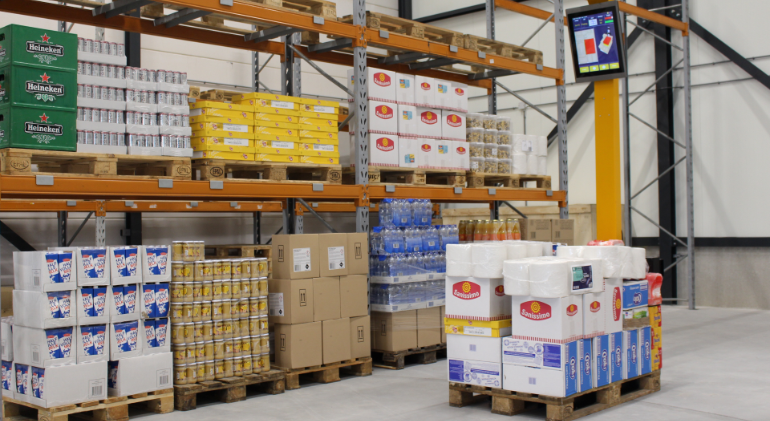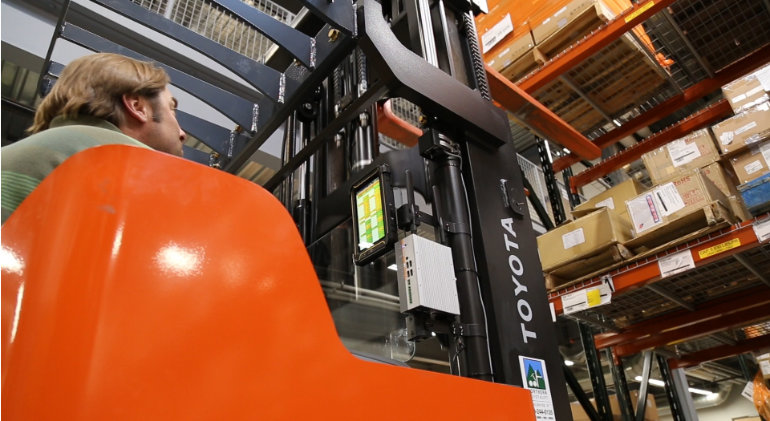When researching the best PC for smart warehousing and logistics, you might have a specific spec you’re trying to meet or processing capability you’re looking to achieve. You’re also likely looking for a computer that is better, faster and more reliable.
 Best PC for Smart Warehousing and Logistics – How to Choose
Best PC for Smart Warehousing and Logistics – How to Choose

Cole Wangsness, Sales Engineer | OnLogic
Rise of eCommerce
Why the sudden drive to improve warehousing and logistics processes? There has been a focus on smart warehousing and logistics with the rise of ecommerce. It has been growing steadily over the past 5 years by about 19% a year. Then the pandemic accelerated ecommerce growth by over 30%. Consumers avoided stores and opted for online shopping amid safety concerns. This rapid growth has businesses scrambling to improve their warehouse and logistics workflow.
Considerations for the Best PC for Smart Warehousing and Logistics
In order to facilitate the massive transfer of goods around the world, warehousing and logistics companies are turning to IoT devices and processes to best equip their teams. So what are the considerations for the best PC for smart warehousing and logistics? It boils down to three things:
- Location
- Connectivity
- Software Requirements
Consideration 1 for Best PC for Smart Warehousing: Location, Location, Location
The location of your equipment will drive many of your requirements. At a minimum, an Industrial Fanless PC will offer protection against dust and other particulates in your warehouse. One of the leading causes of PC failure are computer fans and spinning hard drives. All those moving parts are prone to failure which can result in downtime.
Solid state fanless PCs eliminate both of these failure points to ensure maximum reliability of your system. As an example, if you place a PC behind a TV screen near the ceiling to give real-time feedback or work instructions, the last thing you want to do is send a technician up on a scissor lift to swap out hardware.
Consider an industrial panel PC for intuitive and convenient access to machine controls. Automated warehousing solutions frequently utilize an all-in-one touchscreen computer to offer human/machine interface (HMI) control for robots, machinery and vehicles.
This panel PC is used to help an order picker load a pallet safely and quickly through visual instructions.
Look to a Rugged PC Solution for more Extreme Locations
However, you may need more protection if your desired installation is located in an area that gets very hot or very cold. For example, if you have scanning and label printing systems that are located right next to the receiving dock, you’ll want to consider if the temperature drops below freezing in the winter. Or if the temperature gets above 100°F in the summer. If so, you may want to consider a rugged PC. If the computer is mounted on a forklift or other moving equipment, rugged PCs also offer protection from shock and vibration that may cause failures in a traditional PC.
Consideration 2 for Best PC for Smart Warehousing: Connectivity at the Edge
When looking at the data flow for a typical smart warehousing project, it can be simplified into these steps:
- Local devices collect data from machinery, shipments, or sensors.
- The data is processed either by an on-site gateway or in the cloud.
- The data is fed into a warehouse management system or similar software.
Which raises the question: How do we get data from local equipment, sensors, robots, or shipments we need to track to where it ultimately needs to go? Simply put, what type of connectivity do we need?
Wired vs. Wireless Connectivity
There are two ways to accomplish efficient data transfer: direct wired I/O connectivity with the computer, or wireless connectivity. Wired connectivity is good for when the PC will always be in the same place in relation to the machinery. For example a PC integrated into a material handling system (MHS) can get data through its ethernet ports, or a PC connected to a forklift can collect data through the CAN Bus for equipment health monitoring.
Whereas wireless connectivity excels when the data needs to hop from one device to another or the object being monitored is moving around. Take our example of the forklift monitoring device. You wouldn’t connect cables to push the data to a server as the forklift will be in motion, the same goes for picking robots in automated warehouses.
Consideration 3 for Best PC for Smart Warehousing: Software Requirements
When looking for the best PC for smart warehousing, one of the first questions to answer is what software is going to be deployed? You may already have a software package you are tying into or maybe you are looking for something new.
When integrating an existing software package, consider the desired level of access for each operator. For example, the thin clients for your picking team will likely need less compute power than a supervisor running local controls software for the entire facility. Your choice of hardware should reflect this. There is seldom a one-size fits all approach for outfitting your entire warehouse.
Working with hardware that comes pre-imaged or pre-certified for your desired software solution can help save you time and integration delays, whether you’re setting up SCADA/MES, Thin Clients, AWS Greengrass, or any other solution.
Today’s warehousing and logistics operations are leveraging technology in so many ways. The pace of growth and innovation is truly astounding. Keeping up is about understanding what you’re trying to do and then finding the right partners who can help you get the best solution for your needs.
The content & opinions in this article are the author’s and do not necessarily represent the views of RoboticsTomorrow

OnLogic
A global industrial PC manufacturer and solution provider focused on hardware for the IoT edge, OnLogic designs highly-configurable computers engineered for reliability. Their systems operate in the harshest environments and power innovation in the evolving Internet of Things. Founded in 2003 as Logic Supply, the company has served more than 70,000 customers. OnLogic has offices in the US, Netherlands, Taiwan and Malaysia.
Other Articles
Edge Computing and AI in Manufacturing
Managing Robots with Plus One Robotics
More about OnLogic
Comments (0)
This post does not have any comments. Be the first to leave a comment below.
Featured Product



